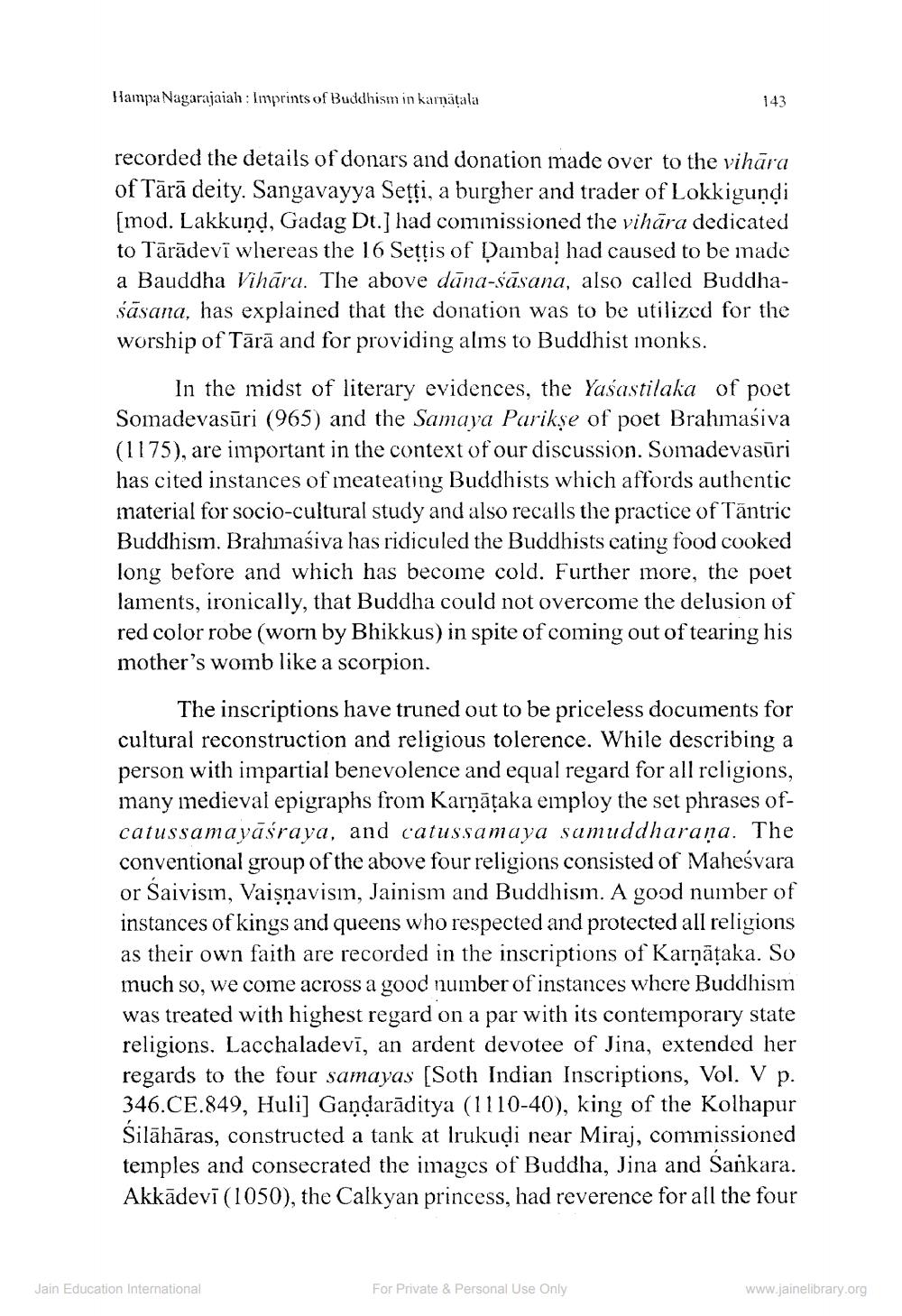________________
Hampa Nagarajaiah: Imprints of Buddhism in karnatala
143
recorded the details of donars and donation made over to the vihāra of Tārā deity. Sangavayya Setti, a burgher and trader of Lokkigundi [mod. Lakkund, Gadag Dt.] had cominissioned the vihāra dedicated to Tārādevī whereas the 16 Settis of Dambal had caused to be made a Bauddha Vihāra. The above dana-sāsana, also called Buddhasāsana, has explained that the donation was to be utilized for the worship of Tārā and for providing alms to Buddhist monks.
In the midst of literary evidences, the Yaśastilaka of poet Somadevasūri (965) and the Samaya Parikse of poet Brahmasiva (1175), are important in the context of our discussion. Somadevasūri has cited instances of meateating Buddhists which affords authentic material for socio-cultural study and also recalls the practice of Tântric Buddhism. Brahmaśiva has ridiculed the Buddhists eating food cooked long before and which has become cold. Further more, the poet laments, ironically, that Buddha could not overcome the delusion of red color robe (worn by Bhikkus) in spite of coming out of tearing his mother's womb like a scorpion.
The inscriptions have truned out to be priceless documents for cultural reconstruction and religious tolerence. While describing a person with impartial benevolence and equal regard for all religions, many inedieval epigraphs from Karņāțaka employ the set phrases ofcatussamayāšraya, and catussamaya sumuddharaņa. The conventional group of the above four religions consisted of Maheśvara or Saivism, Vaisnavism, Jainism and Buddhism. A good number of instances of kings and queens who respected and protected all religions as their own faith are recorded in the inscriptions of Karnataka. So much so, we come across a good number of instances where Buddhism was treated with highest regard on a par with its contemporary state religions. Lacchaladevi, an ardent devotee of Jina, extended her regards to the four samayas (Soth Indian Inscriptions, Vol. V p 346.CE.849, Huli] Gandarāditya (1110-40), king of the Kolhapur Silāhāras, constructed a tank at Irukudi near Miraj, cominissioned temples and consecrated the images of Buddha, Jina and Sankara. Akkādevī (1050), the Calkyan princess, had reverence for all the four
Jain Education International
For Private & Personal Use Only
www.jainelibrary.org




